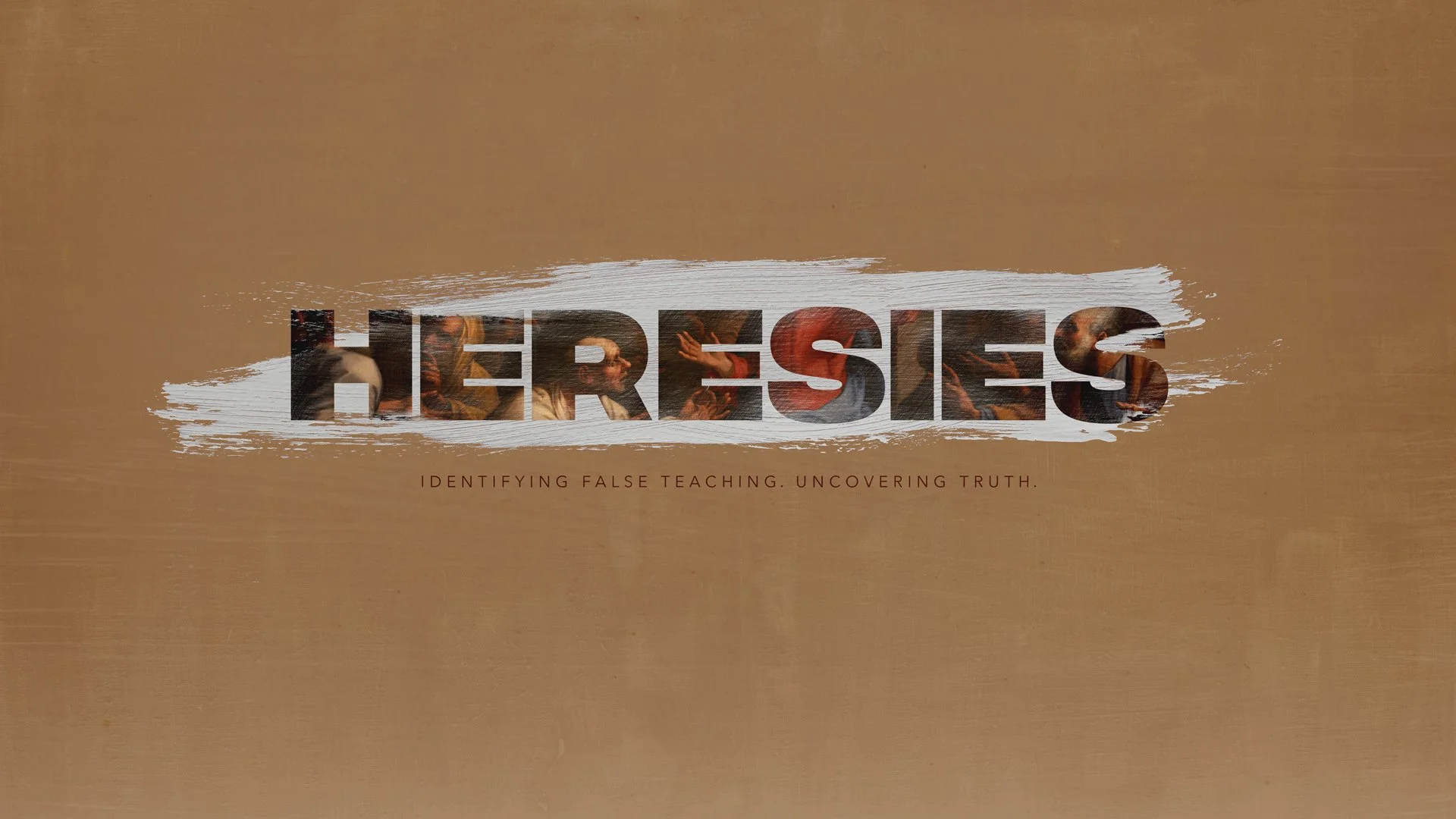Special Edition: What makes a Good Heresy?
Blog Series Intention Recap
This four-part series deals with common heretical beliefs held by those in society—and many in the church. Through examining some of these beliefs through a biblical lens and seeing the struggles Christians have had throughout the centuries, we can see the truth of God’s Word and how to gain a better appreciation of the importance of correct doctrine.
This post is part of the series “Heresies.” Click here to see the rest of the posts.
Let’s jump into this Special Edition:
Heresy, a deviation from orthodox Christian beliefs, has been a persistent challenge throughout church history, from early theological disputes to modern-day controversies. Understanding heresy requires us to trace its roots, explore how the church has responded, and recognize the importance of safeguarding biblical truth.
Why it Matters:
Heresy is the belief or teaching that deviates from established Christian doctrine.
The early church encountered numerous heresies, prompting the development of creeds and councils to preserve orthodoxy.
Key historical heresies, such as Gnosticism, Arianism, and Pelagianism, shaped Christian theology and the church’s responses.
Defending the faith requires understanding heresy’s history and the foundational truths of Scripture.
Go Deeper:
Heresy refers to beliefs or teachings that deviate from the core doctrines of Christianity, as defined by the Bible and affirmed by the historic church. The term originates from the Greek word hairesis, meaning “choice” or “faction.” In the New Testament, heresy was used to describe divisions or departures from apostolic teaching (Galatians 5:20; 2 Peter 2:1). During the early centuries of the church, “heresy” became a term for any doctrine that strayed from the apostolic faith.
Orthodoxy, on the other hand, refers to the correct or sound belief—those teachings that align with the foundational truths of the Christian faith, such as the nature of God, Christ, and salvation. The distinction between heresy and orthodoxy has been important throughout history, as heresies have repeatedly threatened the integrity of the gospel and Christian practice.
The Early Church and Heresy
The early church faced a number of heresies, each challenging different aspects of Christian doctrine. These theological deviations were addressed by church councils, which clarified and defended orthodox beliefs.
1. Gnosticism (2nd–4th Century)
Gnosticism was one of the earliest and most pervasive heresies. This movement claimed that secret knowledge (gnosis) was the key to salvation. Gnostics believed that the material world was evil, created by a lesser god, and that spiritual enlightenment could only be achieved by escaping the physical body. This view directly contradicted the Christian understanding of creation, the incarnation, and redemption.
Response to Gnosticism:
The church countered Gnosticism by affirming that creation is good (Genesis 1:31), Christ’s incarnation was real (John 1:14), and salvation is available to all through faith, not secret knowledge (1 Timothy 2:3-4). The Apostle’s Creed, an early Christian confession, directly opposed Gnostic ideas by declaring faith in “God the Father Almighty, Maker of heaven and earth,” and affirming the physical resurrection of Christ and believers.
2. Arianism (4th Century)
Arianism, named after the priest Arius, denied the full divinity of Christ. Arius taught that Jesus was a created being, distinct from and subordinate to God the Father. This heresy threatened the heart of Christian theology by challenging the doctrine of the Trinity.
Response to Arianism:
The church convened the Council of Nicaea in AD 325 to address Arianism. The result was the Nicene Creed, which affirmed that Jesus is "begotten, not made, of one substance with the Father." The phrase “of one substance” (Greek: homoousios) emphasized that Jesus is fully divine, coequal, and coeternal with the Father. The council defended the doctrine of the Trinity, safeguarding the essential Christian belief in the deity of Christ.
3. Pelagianism (5th Century)
Pelagianism, a heresy named after the British monk Pelagius, denied the concept of original sin and taught that humans could achieve salvation through their own efforts without the need for divine grace. Pelagius believed that people were born morally neutral and had the inherent ability to obey God's commands.
Response to Pelagianism:
The church, led by theologians such as Augustine, condemned Pelagianism at the Council of Carthage in AD 418. Augustine emphasized that humans are born with a sinful nature and are incapable of saving themselves apart from God’s grace (Romans 3:23, Ephesians 2:8-9). This debate shaped the church’s understanding of grace, sin, and the need for Christ’s atoning work.
How does this help me understand, “Heresies?”
Throughout church history, heresy has challenged the truth of the gospel, prompting the church to define and defend its core beliefs. From Gnosticism and Arianism to modern distortions like the Prosperity Gospel and Universalism, heresies have sought to undermine the foundations of Christian faith. The church’s response—whether through councils, creeds, or Scripture—has been to safeguard orthodoxy and ensure that the truth of Christ is preserved for future generations.
In every generation, Christians must contend for the faith (Jude 3) by studying Scripture, knowing the history of heresy, and standing firm in the gospel. As heresies continue to emerge, the church must remain vigilant, upholding the unchanging truth of God’s Word in an ever-changing world.
